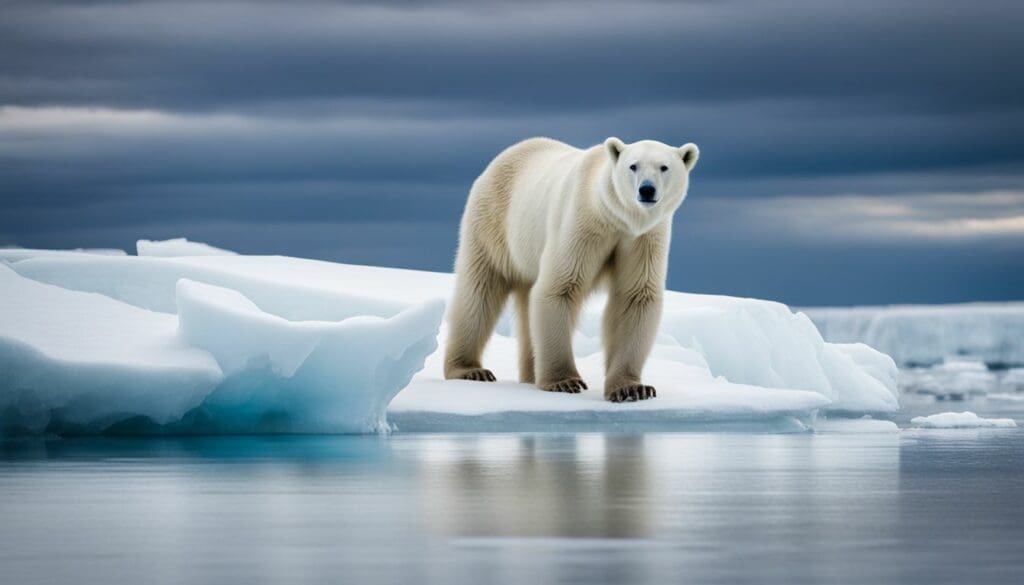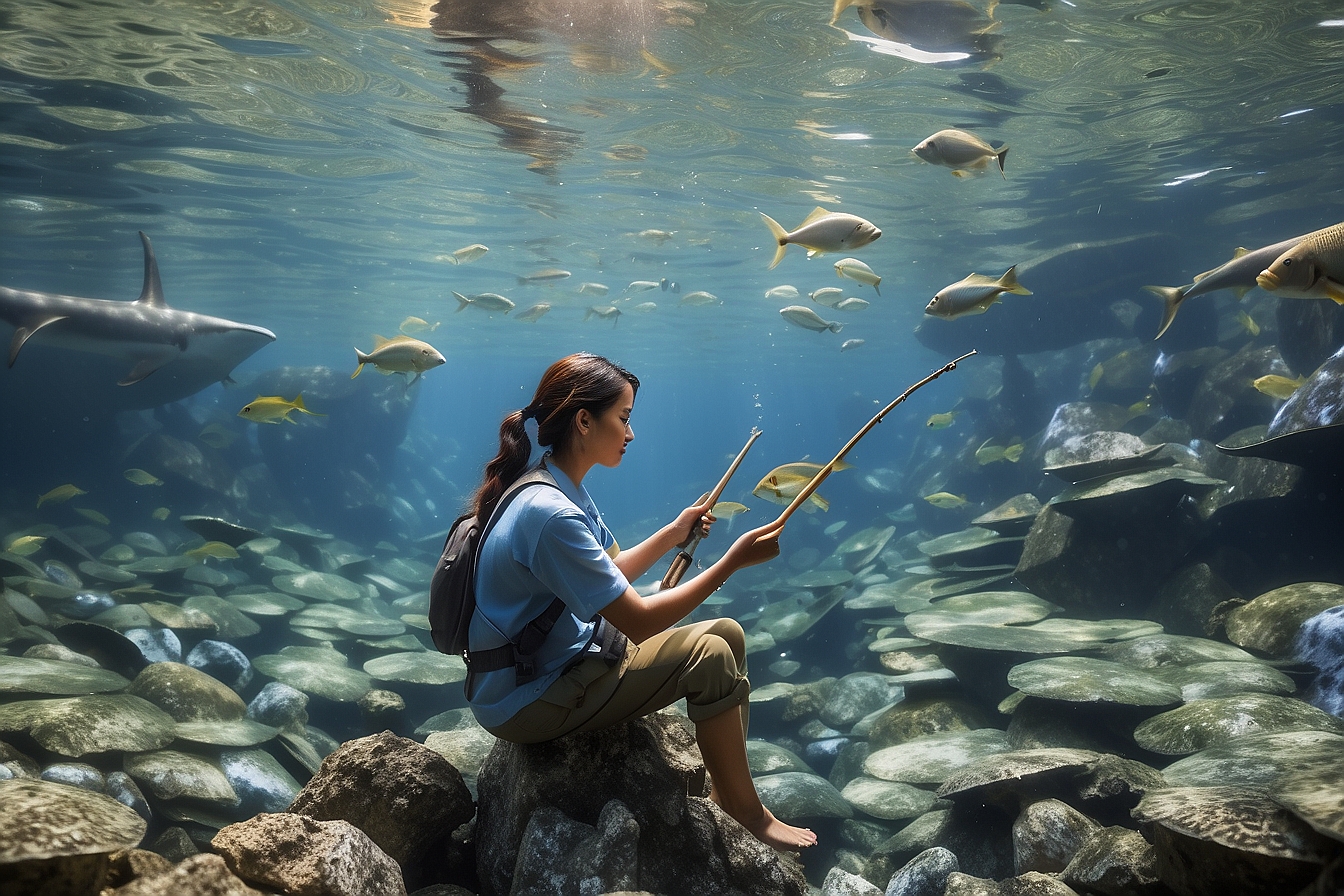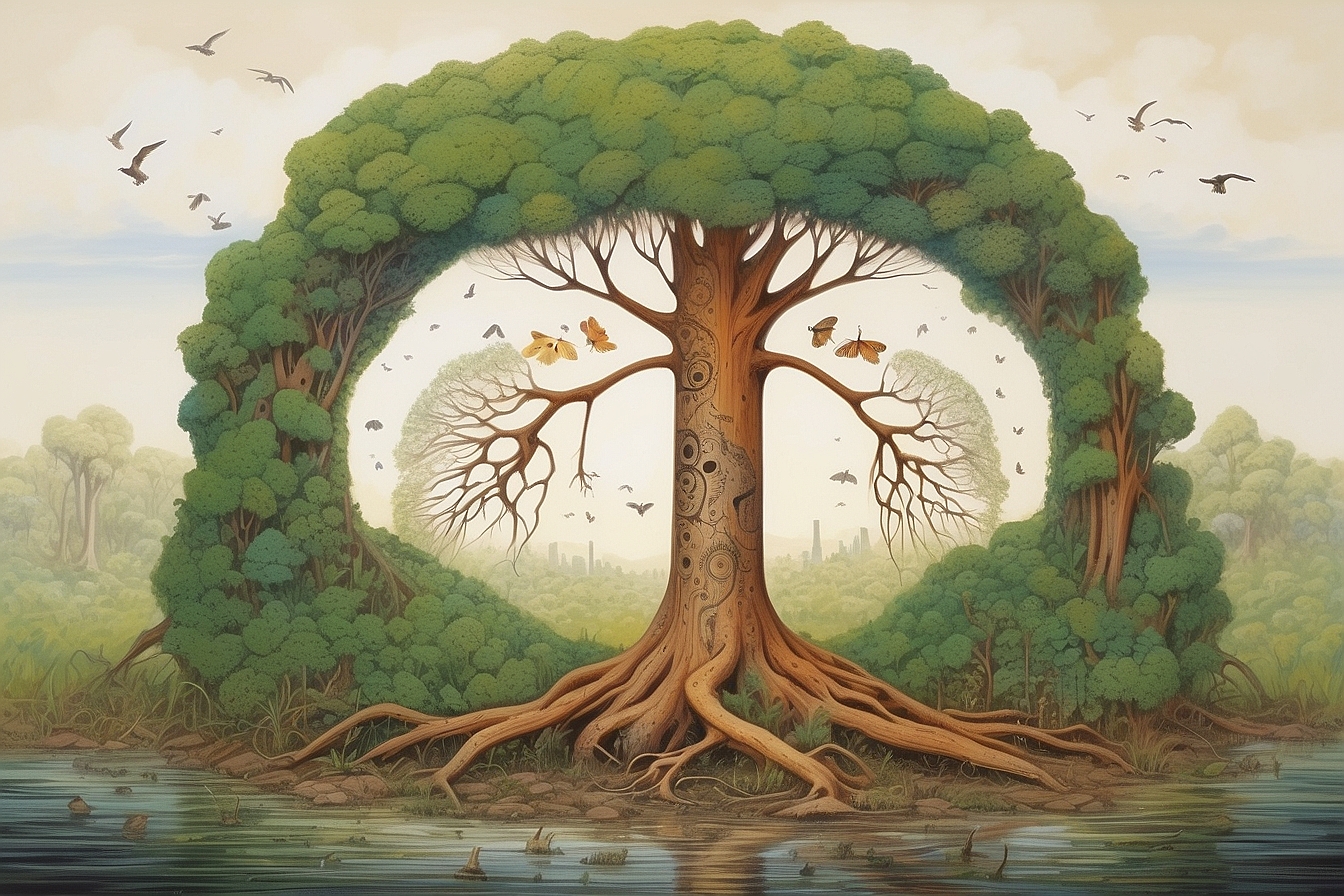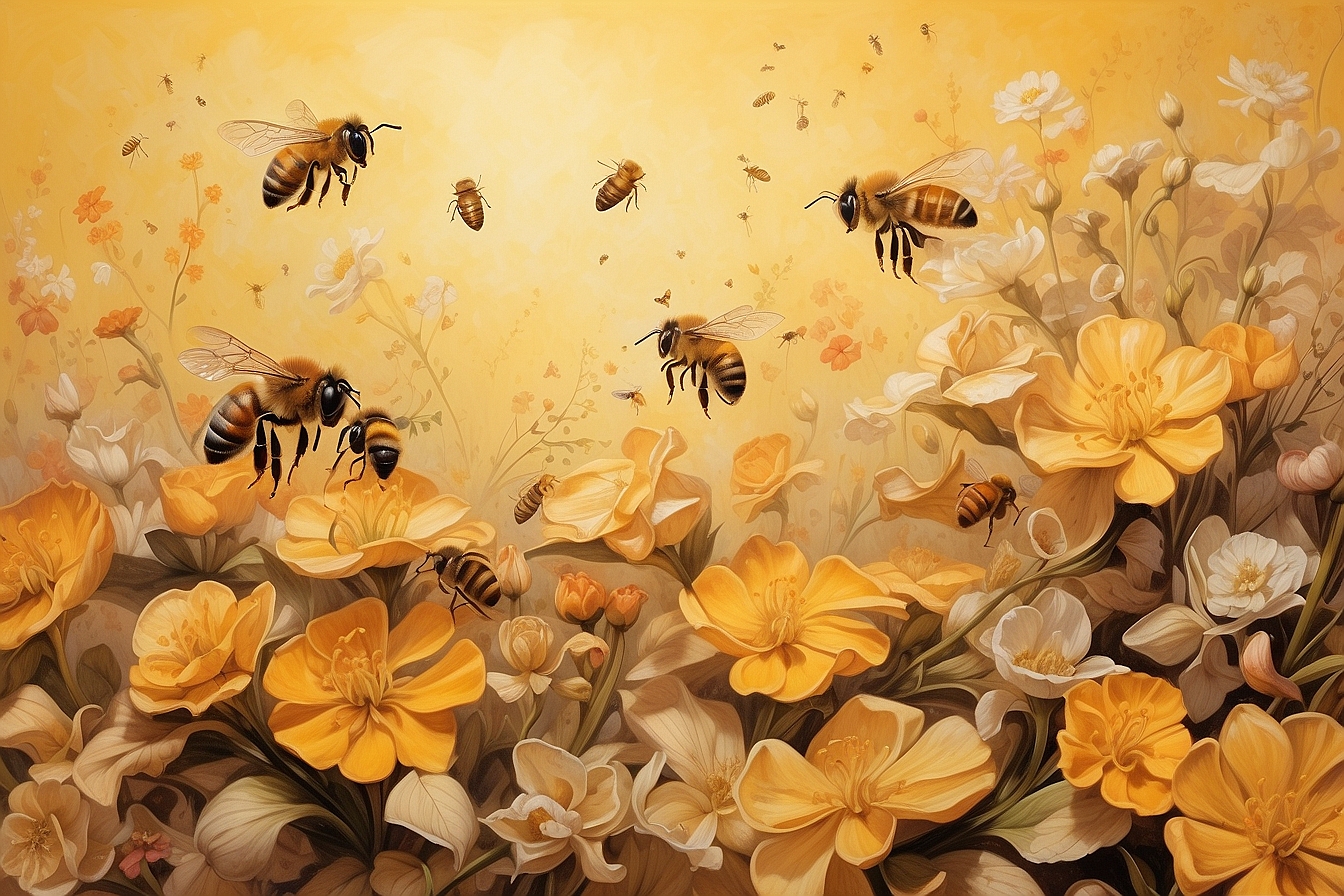Many of us can’t help but feel a deep sense of responsibility when we think about the melting ice caps and the dire situation facing our majestic polar bears. We’re not alone in our concern; studies suggest that unless we take action, we could see a dramatic decline in polar bear populations by 2050, as their icy habitats continue to disappear.
Our article delves into the considerable challenges these iconic creatures are up against, teasing apart both the scientific data and potential solutions to their plight for survival.
So keep on reading – there’s a glimmer of hope yet on the horizon!
Key Takeaways
- Polar bears are under severe threat due to the loss of Arctic sea ice, their primary hunting ground, which is critical for their survival.
- Climate change not only affects polar bear habitats but also has a profound impact on cub birth cycles and survival rates.
- Human activities such as industrial development and oil exploration pose additional risks to polar bear populations by causing habitat destruction and potential oil spills.
- Conservation efforts include enforcing sustainable hunting quotas, protecting denning habitats, reducing greenhouse gas emissions, and involving indigenous communities in conservation strategies.
- The future of polar bears depends on our immediate action to mitigate climate change effects and protect Arctic ecosystems from further degradation.
The Science behind Polar Bears and Climate Change
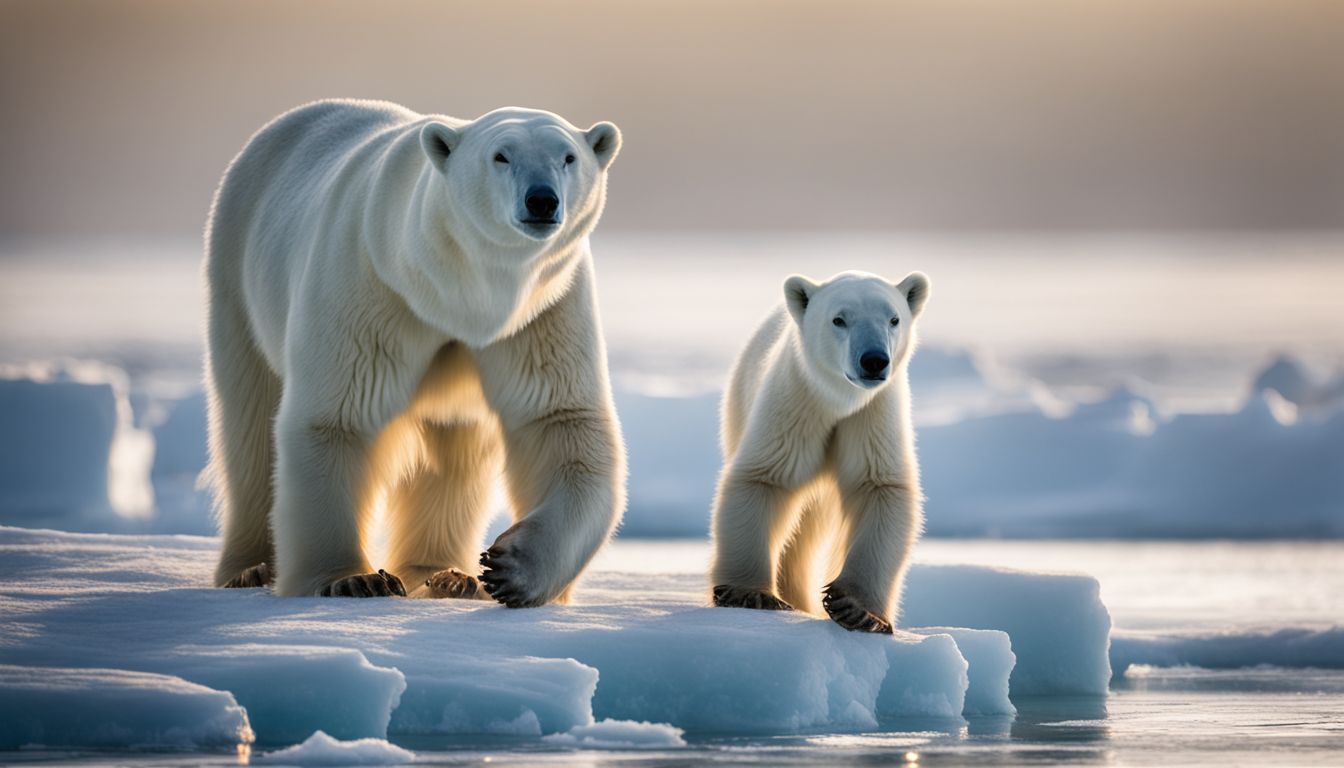
In our exploration of the science behind polar bears and climate change, we’re delving into how the melting Arctic sea ice is disrupting these majestic creatures’ way of life. It’s a narrative where biology and climate systems intertwine, painting a stark picture for the future of Ursus maritimus in their icy home.
Loss of Arctic Sea Ice
As the Arctic climate warms, we see a disturbing trend: sea ice is vanishing at an alarming rate. This isn’t just a minor change; it’s reshaping the entire ecosystem where polar bears and countless other species thrive.
The ice acts as a platform for life, enabling polar bears to hunt their main prey, ringed seals and bearded seals. With less ice to roam, these top predators struggle to find enough food, threatening their survival.
We must acknowledge that disappearing Arctic sea ice presents critical challenges not only for wildlife but for human communities as well. Indigenous peoples who have coexisted with the Arctic environment for millennia face upheavals in their way of life due to changes in marine habitats and altered migration patterns of vulnerable species such as polar bears.
Climate change impacts on this scale compel us to act swiftly to reduce greenhouse gas emissions and protect what remains of these vital frozen landscapes before they’re gone forever.
Changes in the Habitat of Polar Bear Subpopulations
Polar bear subpopulations are feeling the strain as their habitats undergo dramatic transformations. Sea ice loss in the Arctic, their primary hunting ground, pushes them to venture further for food and find new areas to live.
This shift puts them at risk and disrupts age-old migration patterns.
Our changing climate continues to alter the landscapes of Baffin Bay and Beaufort Sea, crucial regions for polar bears’ survival. As sea levels rise and ice sheets diminish, polar bears encounter challenges that threaten both young cubs and adult bears.
It’s on us to protect these endangered species by understanding how climate change affects these majestic creatures so we can advocate effectively for conservation efforts – moving us towards the subsequent focus: The Impact of Warming on Seasonal Ice Dwellers.
The Impact of Warming on Seasonal Ice Dwellers

The relentless march of climate warming has left seasonal ice dwellers, especially our iconic polar bears, in a precarious struggle for survival. Their existence is now dictated by the thinning ice underpaw, altering not just their hunting grounds but the very fabric of their life cycle.
Effects on Cubs
Polar bear cubs face increasing peril as climate change melts the Arctic ice they call home. Our actions, from carbon emissions to oil and gas exploration, are directly impacting these vulnerable creatures before they’ve even had the chance to grow.
Newborns rely on thick sea ice for shelter and access to their mother’s milk, but warming temperatures hinder their ability to thrive. We find fewer dens secure enough for mothers to raise their offspring, leading to low cub survival rates.
Harsher conditions force cubs into premature journeys over thinning ice as mothers search for food. This exposes them not only to exhaustion and malnutrition but also increases encounters with predators and hunters in a rapidly changing environment.
As passionate defenders of wildlife, we must pivot our focus towards adult survival rates – acknowledging that the longevity of polar bears depends significantly on the wellbeing of each new generation.
Adult Survival Rates
We see mature polar bears struggling to cope with the rapidly changing conditions in their Arctic home. As sea ice vanishes, these marine mammals are forced to adapt swiftly or face dwindling chances of survival.
They rely on thick sea ice platforms for hunting seals, their primary food source. Without this critical habitat, bears often endure longer fasting periods and expend more energy searching for sustenance.
Our observations confirm that adult bears are swimming vast distances between ice floes, leading to increased exhaustion and sometimes even death by drowning. The reality is harsh; without stable ice, polar bear populations suffer from malnutrition and lower reproductive success rates.
We must acknowledge the gravity of this situation – as protectors of wildlife and advocates for a balanced ecosystem, it is imperative we address the impacts of climate change reshaping the Arctic regions these majestic creatures call home.
The Importance of Polar Bears in the Ecosystem
Polar bears play a crucial role in maintaining the balance of their marine ecosystem. As top predators, they impact the population dynamics of prey species such as seals, ensuring that only the fittest survive and reproduce.
This selective feeding helps preserve genetic diversity within seal populations, which is vital for their adaptation to changing environmental conditions.
By roaming vast distances across sea ice, polar bears help distribute nutrients across otherwise barren landscapes. They contribute to nutrient cycling when they leave leftovers from their meals, providing food for scavengers like arctic foxes and birds.
These actions link marine and terrestrial ecosystems together in a unique way that no other animal does. Protecting these majestic creatures ensures we also safeguard an entire ecosystem intricately connected by their survival actions and habits.
The Threats Facing Polar Bears
The plight of polar bears has reached a critical juncture; they now face a myriad of threats that jeopardise their very existence. Their survival hangs in the balance, as we witness how climate change intertwines with human encroachment to challenge these majestic Arctic guardians.
Climate Change Effects
We see climate change shrinking the polar bear habitat at an alarming rate, primarily due to the loss of Arctic sea ice. As temperatures rise, these majestic creatures face a bleak future with fewer places to hunt and breed.
Their reliance on sea ice for reaching seal populations, their main food source, becomes increasingly challenged as global warming progresses.
Our hearts break witnessing polar bears covering longer distances to find food, often leading to exhaustion and even starvation. Rising temperatures also cause earlier spring melts and later autumn freezes, disrupting the delicate timing of bear cubs’ birth cycles and reducing their survival chances.
With each passing year, human-caused climate change pushes polar bears closer to extinction risk by upsetting the balance in this high-Arctic ecosystem they call home.
Industrial Impacts
Moving beyond the effects of a warming planet, we must also confront industrial activities that further endanger polar bears. Oil and gas development, particularly in sensitive areas like the Arctic National Wildlife Refuge, disrupts critical feeding and denning habitats.
These operations bring noise pollution, increased human presence and the risk of oil spills—all which can have catastrophic consequences for wildlife.
The Willow Project serves as an example where industry may threaten local ecosystems through potential spills and habitat fragmentation. We advocate for stricter regulations to protect these regions from such risks because once an ecosystem is damaged it can take generations to recover—if at all.
Limiting industrial footprints within important habitats remains crucial as we strive to shield polar bears from harm caused by our quest for resources.
Human and Polar Bear Conflicts
As climate crisis escalates in the Arctic, shrinking sea ice forces polar bears into closer contact with human populations. We see them wandering into towns, scavenging for food near settlements, and sometimes even posing threats to human safety.
These encounters can end tragically for both parties—polar bears may be killed in defense, or humans might get injured when these powerful animals get too close.
We must acknowledge that diminishing Arctic habitats push polar bears to desperate measures as they struggle to find sustenance. Actions need focusing on mitigating the effects of climate change and implementing solutions such as securing waste management systems in northern communities to reduce attractants for hungry bears.
By taking proactive steps, we aim to lower the risk of conflicts while respecting the needs of this threatened species, ensuring a coexistence built on understanding rather than fear.
Conservation Efforts to Protect Polar Bears
We’re pushing the boundaries with innovative strategies to safeguard polar bears against the encroaching peril of a warming world; discover how we can all contribute to their survival.
Addressing Climate Change
We see climate change as the greatest threat to polar bears and their Arctic habitat. Our efforts aim to mitigate its effects on these majestic creatures and the complex ecosystem they inhabit.
- Prioritise carbon footprint reduction: We all must take responsibility for decreasing our own individual carbon emissions. Simple actions like reducing air travel, enhancing energy efficiency in homes, and supporting renewable energy sources can collectively make a significant impact.
- Advocate for stronger policies: Pushing for robust environmental legislation is crucial. We lobby governments to implement stricter controls on greenhouse gases and commit to international agreements aimed at curbing global warming.
- Support scientific research: Investing in science helps us understand how climate change affects polar bears. This knowledge guides conservation actions by the Polar Bear Specialist Group and informs decisions under the Endangered Species Act.
- Promote sustainable living: Encouraging communities to adopt sustainable hunting practices ensures that wildlife populations remain balanced, which is vital for maintaining biodiversity in Arctic regions.
- Engage with local inhabitants: Working alongside those who live in close proximity to polar bears integrates Traditional Ecological Knowledge (TEK) into our strategies. This approach respects indigenous cultures while protecting wildlife.
- Fund climate change education: Education is a powerful tool for conservation. By increasing awareness of the effects of global warming, we inspire action among individuals and policymakers alike.
Reducing Industrial Impacts
- Prioritise cleaner production methods in industries near Arctic regions to cut down on pollutants and greenhouse gases. By choosing sustainable practices, we reduce harmful emissions that contribute to global warming and the deterioration of polar bear habitats.
- Regulate and monitor industrial activities that can lead to habitat loss for polar bears. This includes strict oversight of oil drilling operations and mining projects in the Arctic.
- Develop oil spill response plans that prioritise wildlife protection. In the event of an accident, it’s vital to have quick-acting measures in place to safeguard arctic wildlife from hazardous substances.
- Encourage companies to invest in environmental conservation programmes as part of their corporate social responsibility. When businesses acknowledge their impact on nature, they can play a significant role in preserving the ecosystem that polar bears depend on.
- Engage in international collaboration to ensure shipping routes do not disrupt crucial polar bear migration paths. Shared efforts must be made to keep sea lanes away from sensitive ecosystems in the Arctic basin.
- Promote renewable energy sources over fossil fuels, especially within or near arctic refuge areas. Transitioning towards wind and solar power helps decrease carbon footprints and protect wild species from the effects of climate change.
- Enforce penalties for illegal dumping of waste by industries operating near habitats of arctic wildlife. Proper enforcement deters harmful practices that could put both water quality and animal life at risk.
Ensuring Sustainable Hunting
We understand the critical role polar bears play in Arctic ecosystems. Ensuring sustainable hunting is essential to their survival and the wider health of our planet.
- Legal quotas must be strictly enforced to prevent overhunting. Authorities need to closely monitor polar bear populations and adjust limits based on scientific data.
- Involve indigenous communities who have traditional knowledge about polar bears in conservation efforts. Their insights can guide sustainable hunting practices.
- Support policies under the U.S. Endangered Species Act that protect polar bears from unsustainable hunting pressures. Strong legal frameworks are vital for their survival.
- Educate hunters on the importance of preserving polar bear populations for future generations. Informed communities are more likely to engage in responsible hunting.
- Implement a clear tagging system for legally hunted polar bears, ensuring transparency and traceability in harvests, aiding enforcement actions against illegal hunting.
- Promote alternative livelihoods for communities that rely on polar bear hunting. This can reduce economic dependency and pressure on these endangered species.
- Foster international cooperation, especially between countries sharing polar bear populations like Canada’s Baffin Bay, to harmonise conservation efforts across borders.
- Partner with organisations like the World Wildlife Fund that actively work towards preserving Arctic wildlife through initiatives such as habitat protection and anti-poaching programs.
Protecting Important Polar Bear Denning Habitat
Polar bears depend on their habitat for survival. Ensuring the protection of their denning areas is crucial for their future.
- Identify and safeguard key denning sites, especially in regions known as essential nurseries for polar bear cubs. These are places like Wapusk National Park near Churchill, Manitoba, where many female bears make their dens.
- Implement strict regulations to minimise human disturbance in these sensitive ecological areas. This action will reduce stress on polar bear mothers and improve cub survival rates.
- Collaborate with indigenous communities to integrate traditional knowledge into conservation strategies. Respectful engagement with local residents can provide valuable insights into the location and preservation of den habitats.
- Use satellite technology to monitor changes to polar bear habitats from climate change effects. By tracking shifts in the landscape, we can adapt our conservation efforts as necessary.
- Advocate for stronger enforcement of the Endangered Species Act (ESA). With solid legal backing, it becomes easier to take decisive action against threats to Polar Bear populations.
- Promote responsible tourism that supports conservation rather than hinders it. Tourists should be educated about the importance of not disturbing polar bear dens or contributing to habitat destruction.
- Encourage global participation in reducing greenhouse gas emissions. Mitigating climate change in the Arctic will help preserve sea ice that is pivotal for polar bears during critical denning periods.
The Future of Polar Bears and Climate Change
We must face the reality that the future of polar bears hangs in a delicate balance with climate change. As the Arctic ice continues to retreat, these majestic creatures are losing their primary hunting grounds, making it tougher for them to find food.
It’s critical we address this issue head-on, ramping up our conservation efforts and fighting against the warming trends that threaten their existence.
Efforts are underway to map out strategies that focus on mitigating effects of climate change on polar bears. By cutting down greenhouse gas emissions and protecting vital habitats, we aim to halt further losses.
The IUCN assessment underscores the importance of swift action; without it, tipping points may be reached from which recovery could prove impossible. Conservationists and scientists work alongside communities near Baffin Bay and other key areas to monitor polar bear populations closely, ensuring they can adapt as best as possible in an increasingly challenging environment.
Conclusion
As the ice retreats, polar bears find themselves at a crossroads. Their survival hangs in the delicate balance of our actions and choices. It’s time for us to take bold steps in conservation and climate mitigation.
Every effort counts as we strive to safeguard these majestic creatures of the Arctic alongside their fragile ecosystem. Together, let’s champion a future where polar bears continue to roam the vast, icy expanses.
FAQs
1. How does climate change affect polar bears?
Climate change warms the waters and alters the ice habitats in places like Baffin Bay, making it harder for polar bears to hunt seals and survive.
2. Why is it important to conserve polar bears?
Polar bear conservation is vital because they are a key species in arctic wildlife; their well-being signals the health of their ecosystem.
3. Can other animals like harp seals be impacted by climate change too?
Yes, just like polar bears, harp seals rely on sea ice in Greenland and beyond, which is threatened by warming temperatures due to climate change.
4. Are brown bears affecting polar bear populations as well?
As Arctic ice melts, brown bears sometimes move into polar bear territories leading to more interactions between them which could impact both species.

